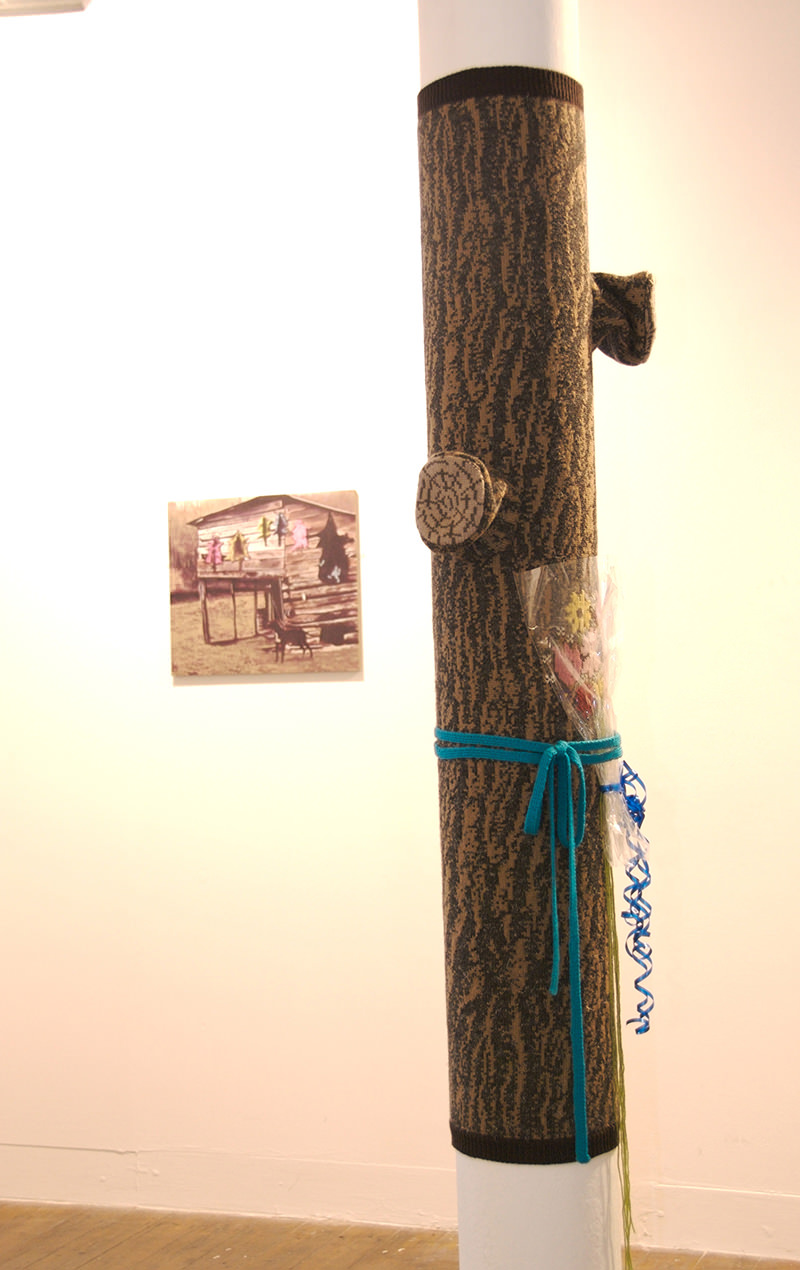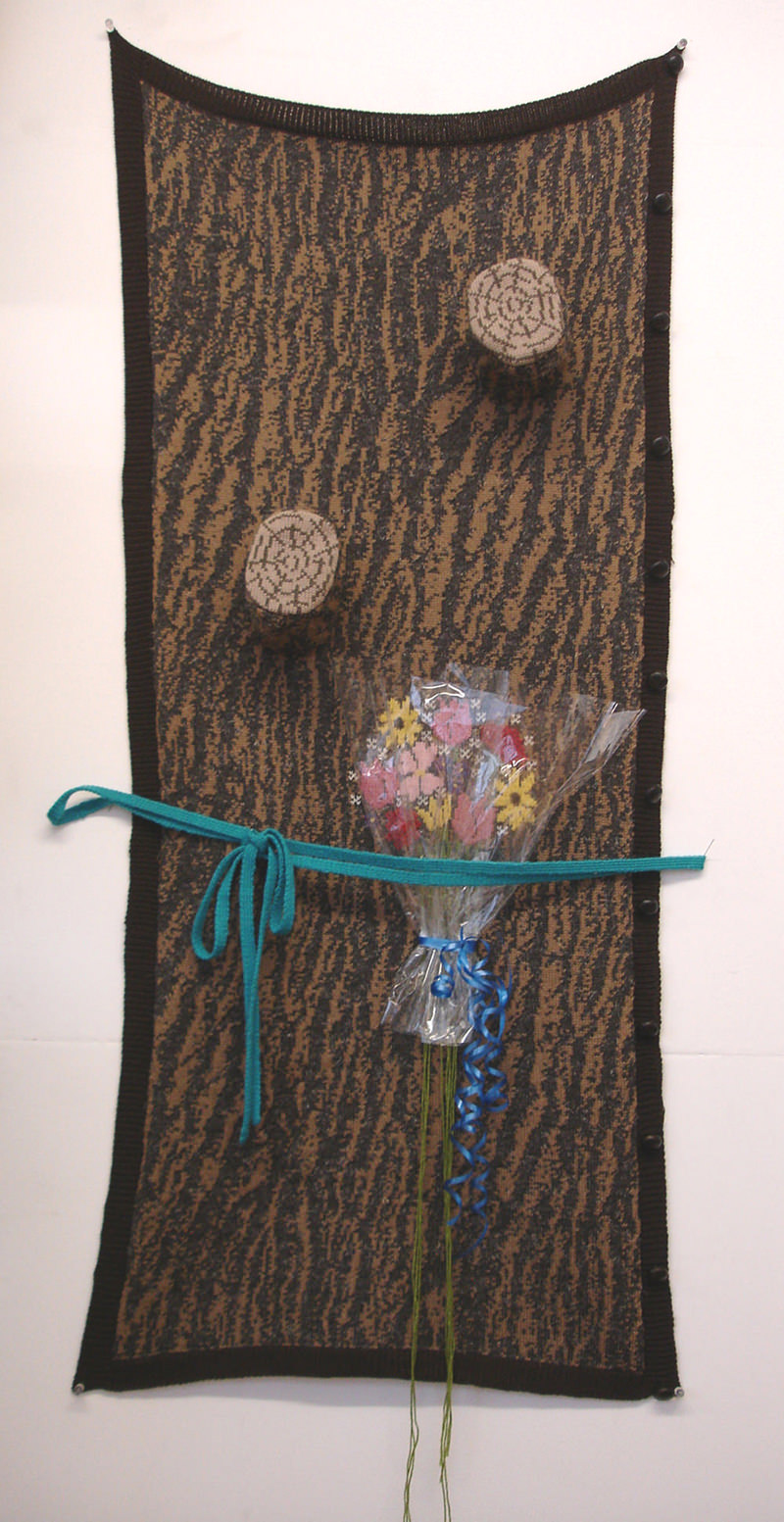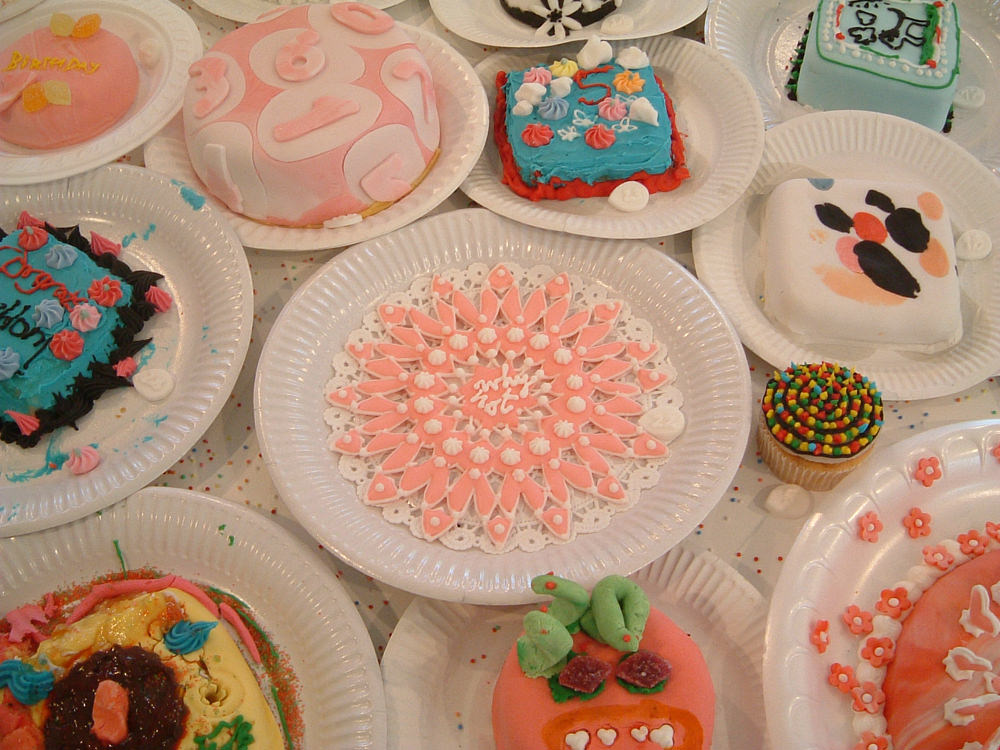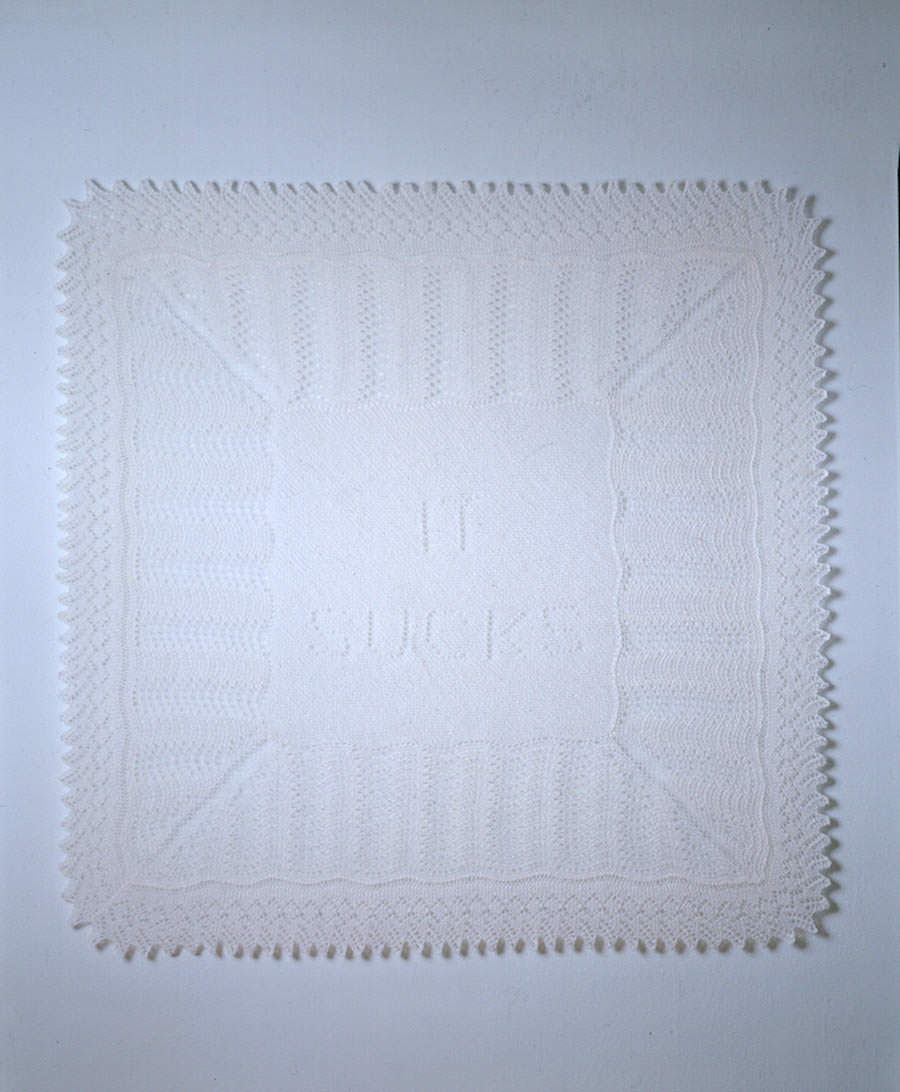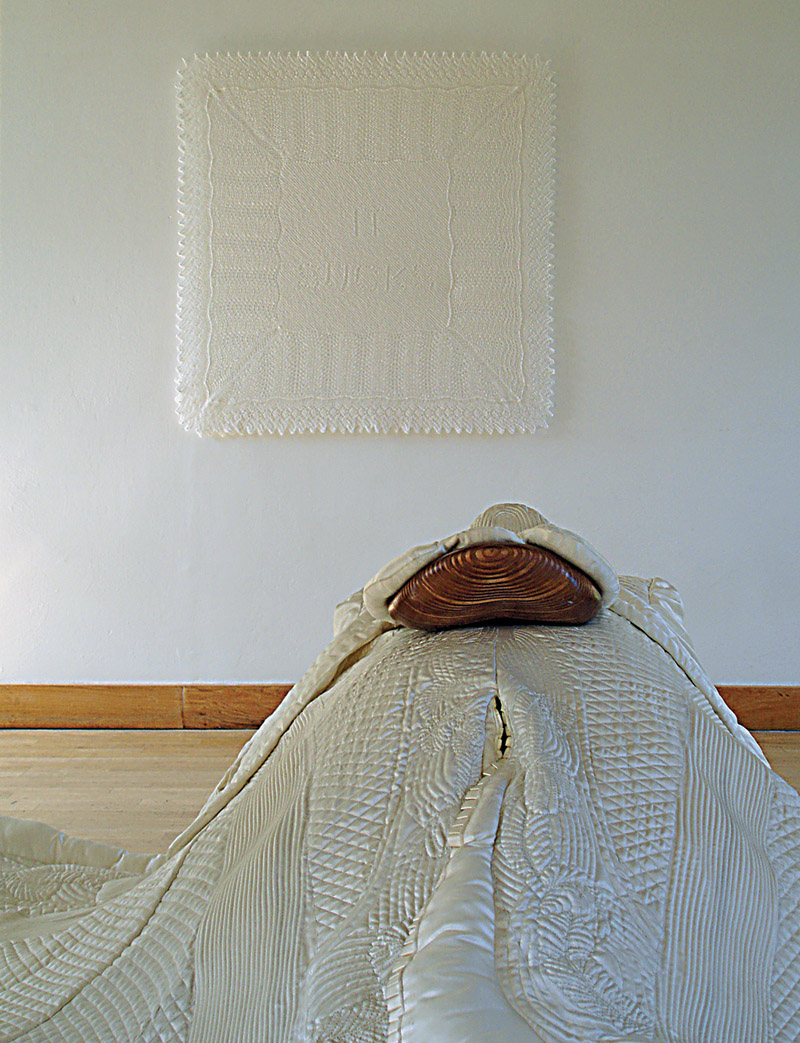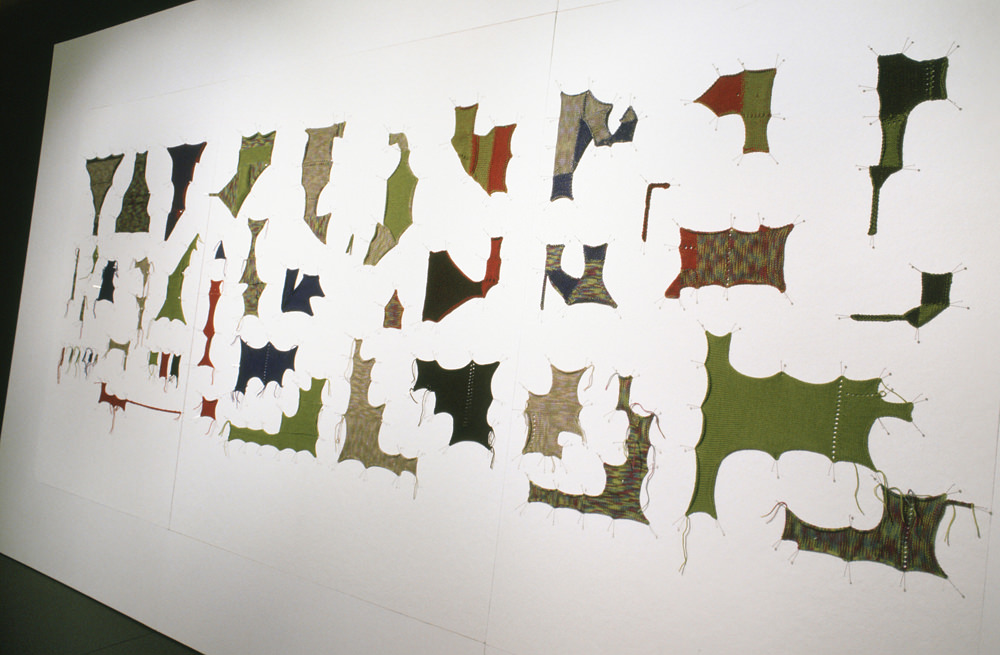Research project funded by the Arts & Humanities Research Council (AHRC) and the Royal College of Art Development Fund (RCA).

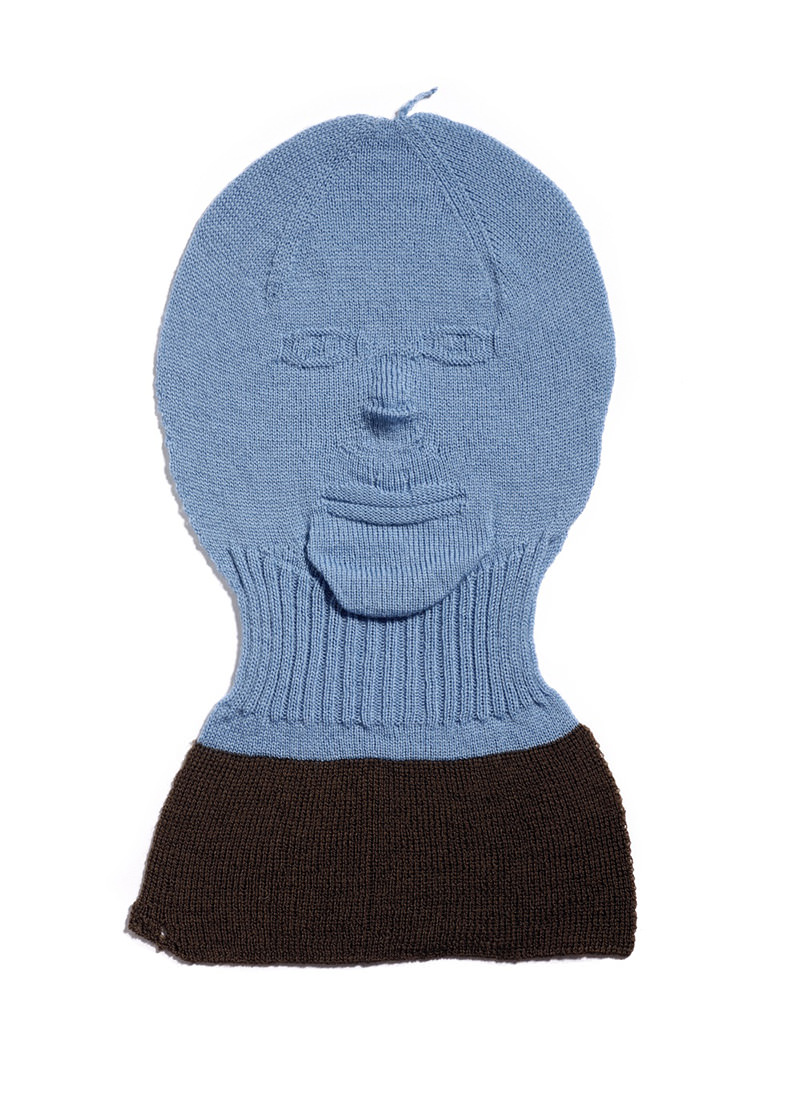




The Perfect – Alex, 2007
machine knitted wool and acrylic yarn
580 × 920 mm
The Perfect – Eddie, 2007
machine knitted wool and acrylic yarn
450 × 240 mm
In the collection of Spring Studios, London
The Perfect – Billy
, 2007
machine knitted wool and acrylic yarn
450 × 240 mm
In the collection of Spring Studios, London
The Perfect – Tilak,
2007
machine knitted wool and acrylic yarn
1400 × 1050 mm
The Perfect, 2007
machine knitted wool
Dimensions variable
Installed at KODE – kunstmuseene i Bergen, Norway
The Perfect Skins, 2007
machine knitted wool, metal rail
1800 × 800 × 100 mm
“It’s not perfect, but who cares?” Well I do. I enjoy imperfection in you and yours but not in me and mine. I am very attracted to the imperfections, failings, and roughness of the material world. I enjoy the evidence of human hands, the inevitable wear and repair of objects. I love the obviously hand-made. But I suffer from being a perfectionist.
This body of work deals with the constant drive for perfection. It is made using technology that was developed to achieve perfection. Technology developed for mass production to make garment multiples that are exactly the same as each other: garments that do not require any hand finishing, garments whose manufacture does not produce any waste, garments whose production does not require the human touch. Garments that are, in fact, perfect.
I have produced my knitted multiples through the use of a Shima Seiki WholeGarment® machine (a computerised, automated, industrial V-bed flat machine, which is capable of knitting a three-dimensional seamless garment). These multiples take the form of life size, three-dimensional human bodies. I have combined them in a variety of different ways to create large-scale knitted sculptures and installations.
Perfectionism is associated with good craftsmanship, something to aspire to. I aim for perfection in all aspects of my life, my work and myself. It can be very debilitating and exhausting and it is of course, unachievable.
Photography: Damian Chapman, Douglas Atfield, Ben Coode-Adams









